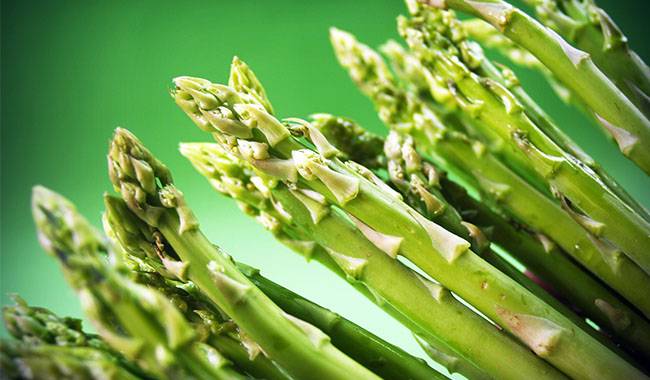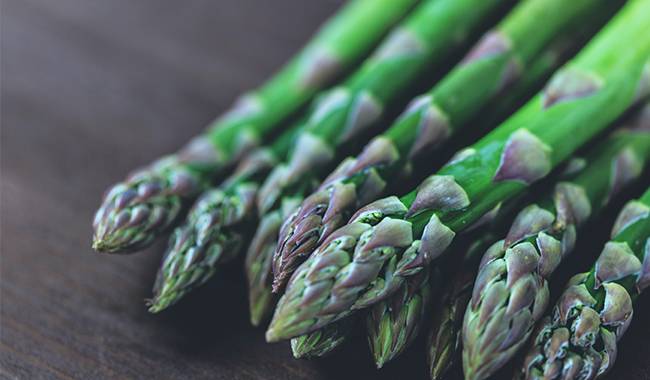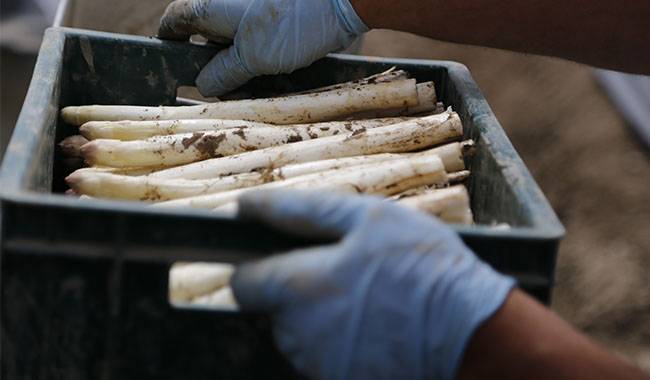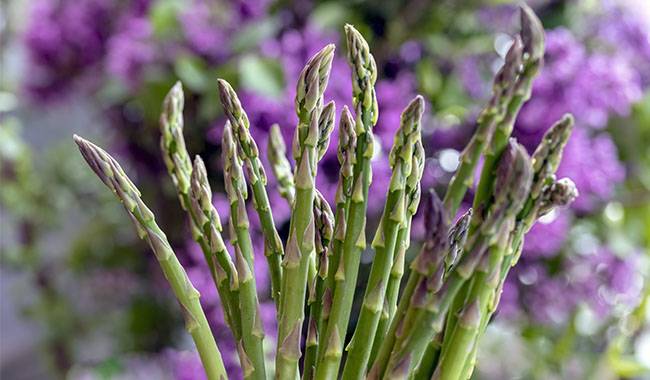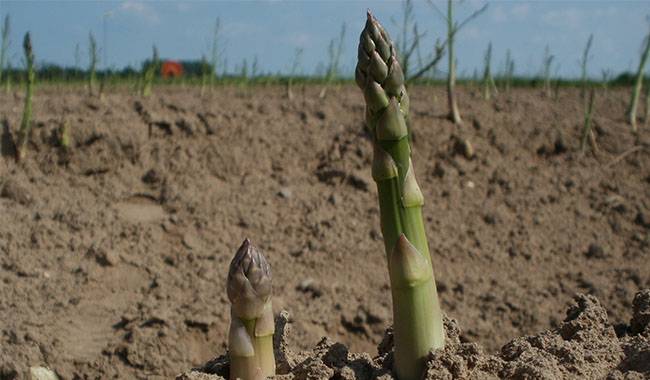
One day when I was in a store buying seeds, I saw bags of asparagus. I wondered if this was the kind of asparagus that gourmets appreciate so much. So, I decided to plant it in my garden, and to my surprise, the seeds sown directly in the ground sprouted. In the third year, I surprised my guests with dishes made from this little-known vegetable. So, it is a pleasure to share my experience with you now.
Since my childhood, I have been familiar with asparagus, a common household plant whose branches are still decorated with bouquets. But back then, I didn’t know that another name for asparagus was Garden asparagus! The genus Asparagus belongs to the Asparagaceae family, and there are more than 300 species. Some asparagus species are edible, called asparagus, grown as vegetable plants, using the young shoots as food. Other species are used only for decorative purposes. However, once planted as individual perennial herbs, they will form lively multi-stemmed shrubs up to 60 inches (1.5 m) in height after many years. In addition, asparagus can use as a green hedge.
It was once classified in the lily family and the related genera Allium, Onion, and Garlic. However, genetic studies have placed lilies, onions, and asparagus in three different families. Liliaceae, Staphylinidae, and Asparagaceae, respectively, with Staphylinidae and Asparagales, grouped in the order Asparagales. The origin of asparagus varies but usually includes most of Europe and the temperate zones of western Asia. It is widely grown as a vegetable crop.
In the United States, there are many species of asparagus in the wild, the most common being Asparagus Officinalis L. The leaves are needle-like but delicate and soft. The flowers are small and almost inconspicuous, but the fruit is large, red at first, then turning black. The berries are not edible. Each berry usually contains 2-3 rather large black seeds. The red berries provide additional decoration to the shrub. Asparagus has been grown in Europe since ancient times. Asparagus dishes are very popular there. Sometimes I hear from acquaintances that they call asparagus Green bean, which is also very tasty. Please don’t get confused. They are entirely different vegetables.
WHICH PART OF THE PLANT IS EDIBLE?
The shoots are spear-shaped young shoots – “candles” – that have reached 7-8 inches (18-20 cm) in length. They appear in mid-spring to June. The most important thing is not to skip harvest time because the shoots become hard and inedible over time. To harvest the shoots, you should carefully break them off or even cut them with a knife in an easy-to-cut place, and new shoots will soon appear.
Asparagus is one of the first vegetables, which is its added value. It is very useful because it contains many vitamins and minerals and the essential amino acid asparagine, which plays an important role in metabolic processes and has a beneficial effect on the nervous system. The product is very low in calories, so it is perfect for people on a diet.
HOW TO GROW ASPARAGUS?
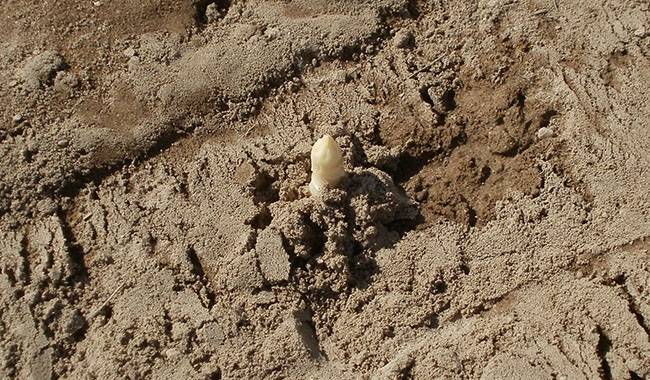
Asparagus can be grown in two ways: seedless asparagus and asparagus shoots.
How to grow seeds
- First, prepare a well-cultivated bed in a sunny place with light soil.
- Apply fertilizer: Apply a bucket of well-rotted manure or compost for every 11 square feet (1 square meter). For vegetable crops, it is a good idea to add 100 grams of mixed manure.
- After purchasing seeds, soak them in water for 2-3 days, dry them gently on filter paper or napkins, and then sow them on the ground. Dried seeds can also be sown, but then you must wait about 30 days for them to germinate.
- Plant at a depth of 1 inch (2.5 cm) with 2 inches (5 cm) between seeds and rows 10-15 inches (25-40 cm) apart.
- You can do this in late April or mid-May. Don’t forget to moisten the beds. The seeds need 10-15 days to germinate.
- When the seeds have germinated, they should be thinned so that the seedlings are spaced at least 6 inches (15 cm) apart.
Seedling planting method
- You can start propagating seedlings in February. Also, soak the seeds, preferably in warm water at about 86 °F (30°C) for 2 to 3 days, and then transfer them to a damp cloth.
- When the first shoots have germinated, transplant them into a cup with a light soil mixture. Remember to keep the soil moist.
- In mid-May, the seedlings can be planted in an open area. By this time, they will be about 6 inches (15 cm) tall.
Asparagus prefers fertile, loose, well-tilled soil. It is intolerant of acidic soil and nearby groundwater. However, if it lacks moisture in the spring, the quality of the shoots will decline, becoming fibrous and bitter. So pay attention to watering, especially if the spring is dry. But remember, too little or too much water is not good for asparagus. Too much water will cause the shoots to rot.
ASPARAGUS BED CARE
Care for the first year should be limited to light loosening and watering.
In the second year, you should fertilize and loosen the soil and water regularly.
In the third year, you can already see the spring shoots, which are ready to eat. Since asparagus roots form slightly higher than the ground, this should be done once a year and introduce a general-purpose vegetable fertilizer. It should be noted that asparagus can grow in one place for a long time. I have been planting them for 5 years now, and it has been a good harvest. I usually choose the largest shoots to eat and cut the rest off in the summer to decorate bouquets. Asparagus has good winter hardiness and overwinters well in the U.S. without additional shade. The plant is virtually unaffected by pests and diseases. In any case, I have never encountered these problems in 10 years.
HOW TO COOK ASPARAGUS
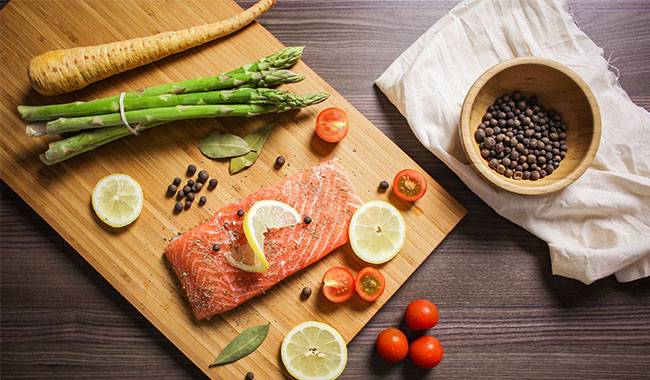
You may have noticed that you can see white and green asparagus in the stores, sometimes with a hint of purple? White asparagus and green asparagus are not different varieties. The secret is that to obtain white asparagus. The beds are pruned while the young shoots are growing so that they are not exposed to the sun’s rays. In other words, white asparagus is the same as green asparagus. It’s just that it’s more troublesome. That’s why I prefer green asparagus.
Basic rules of cooking.
- the shoots should be freshly cut (they are healthier and tastier).
- asparagus does not like to be cooked for long periods.
The main thing to remember when cooking asparagus is not to overcook it. Just cook it in boiling salted water for 2-3 minutes or on the grill. Also, asparagus needs suitable accompaniment. Asparagus is excellent in salads with other vegetables, lemon juice, and olive oil. It goes well with cheese, ham, and mayonnaise. Mashed asparagus soup is also very popular.
You can buy asparagus at the supermarket now, but growing your own is a lot of fun! You can buy it at the supermarket. And it’s not complicated. Of course, you won’t be able to eat asparagus until the 3rd year after planting. But you can wait because the plant itself is very decorative and will decorate the site with its shoots. The only problem is the beauty of the plant itself, which creates a dilemma: whether to cut it down for food or leave it for decoration.




